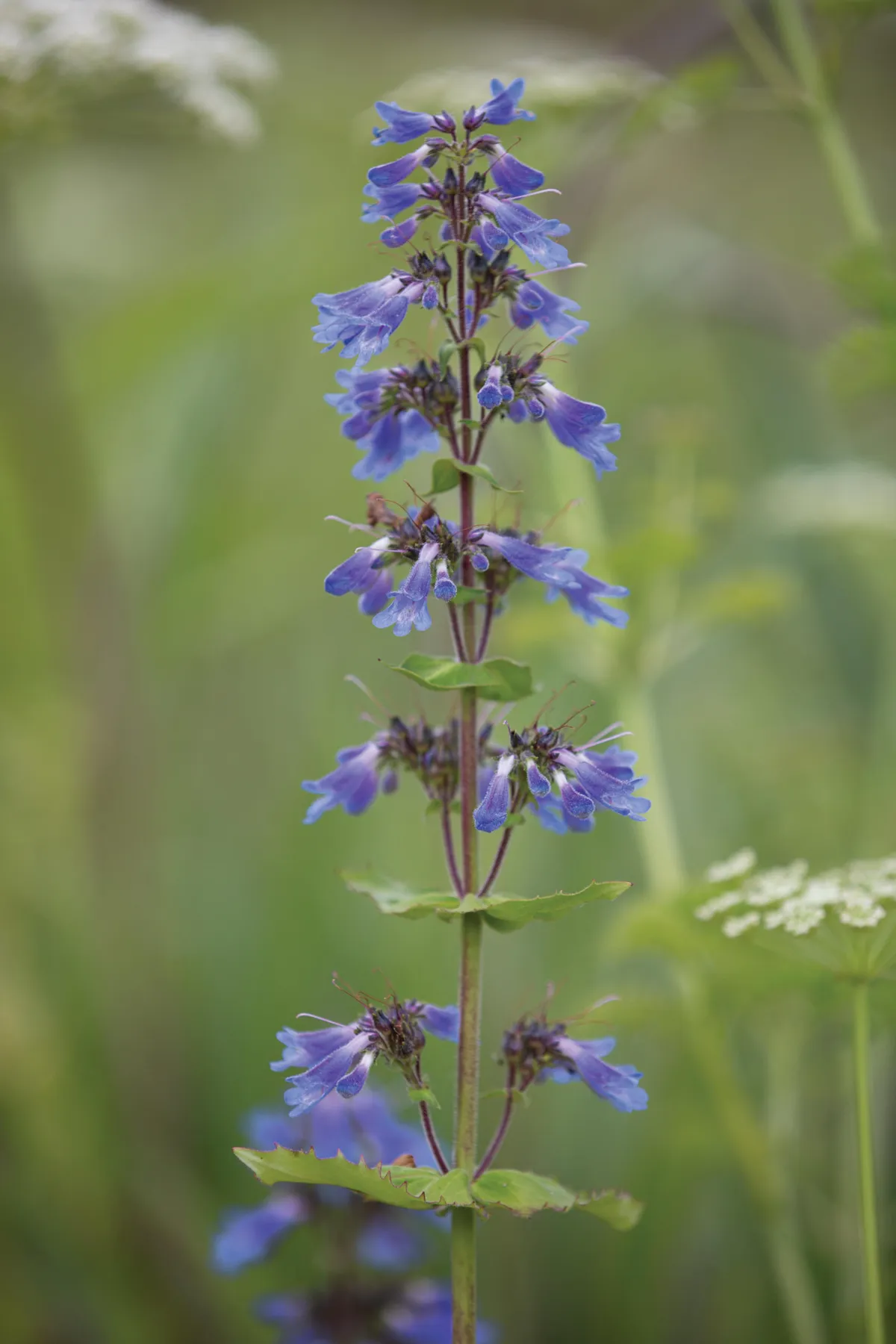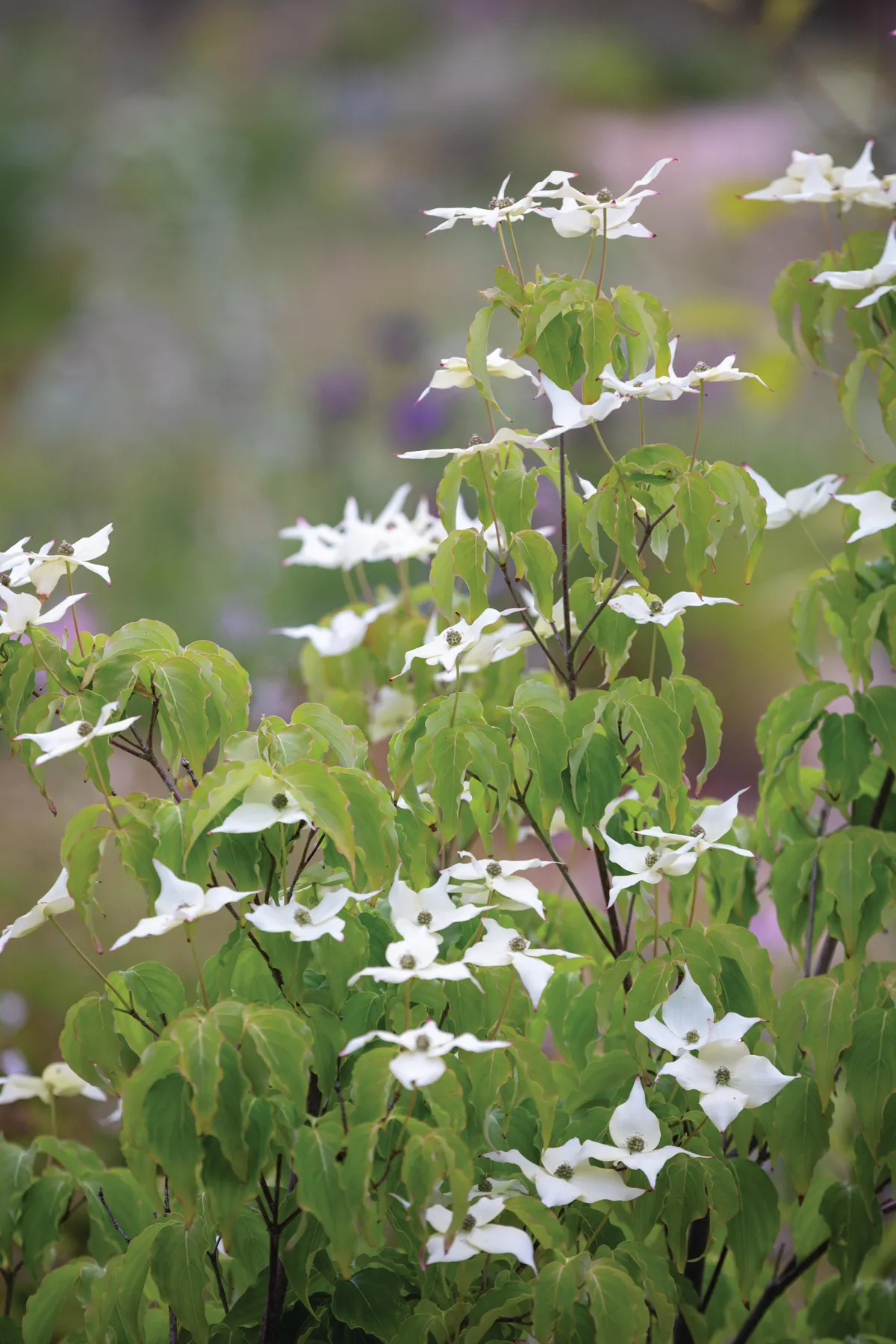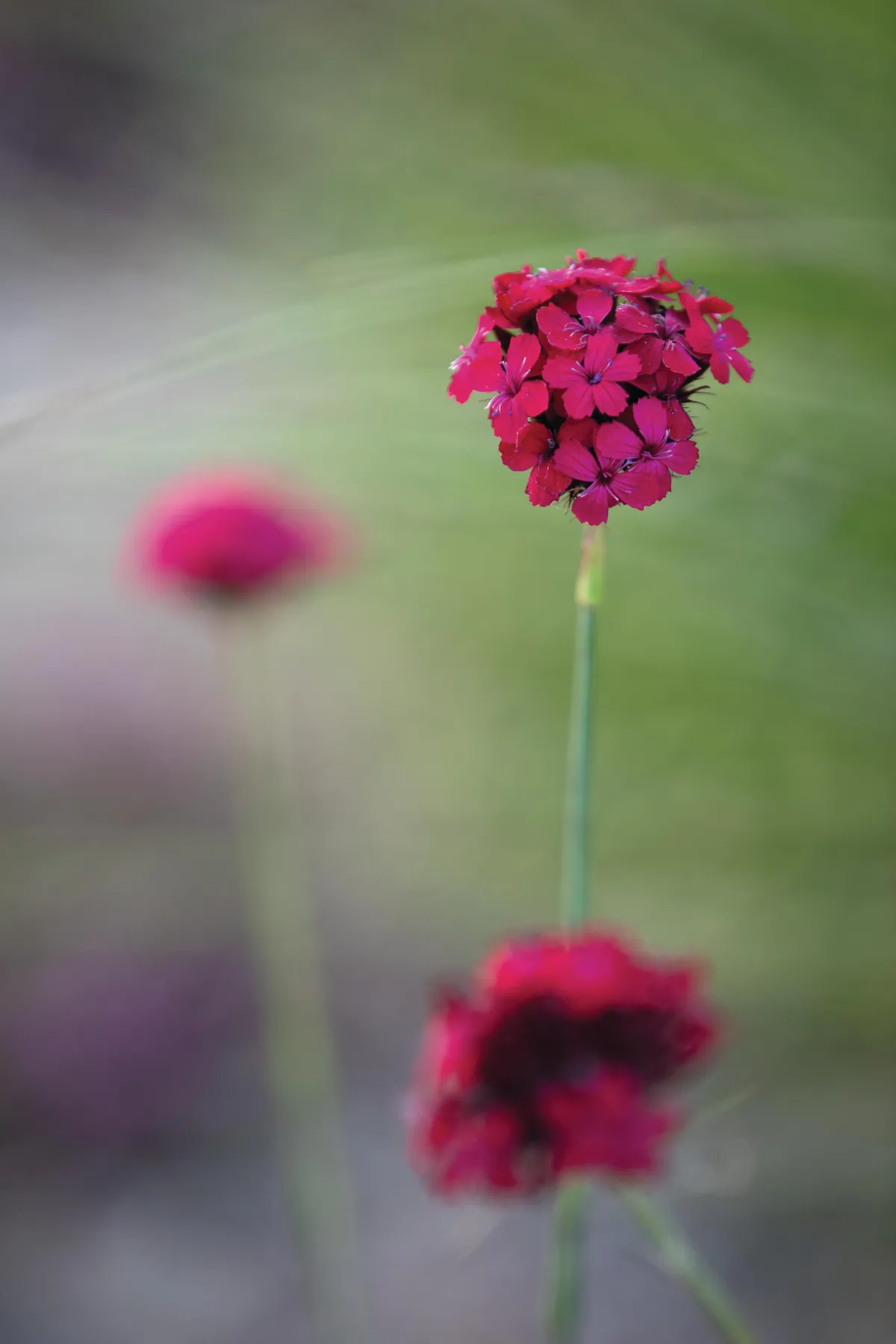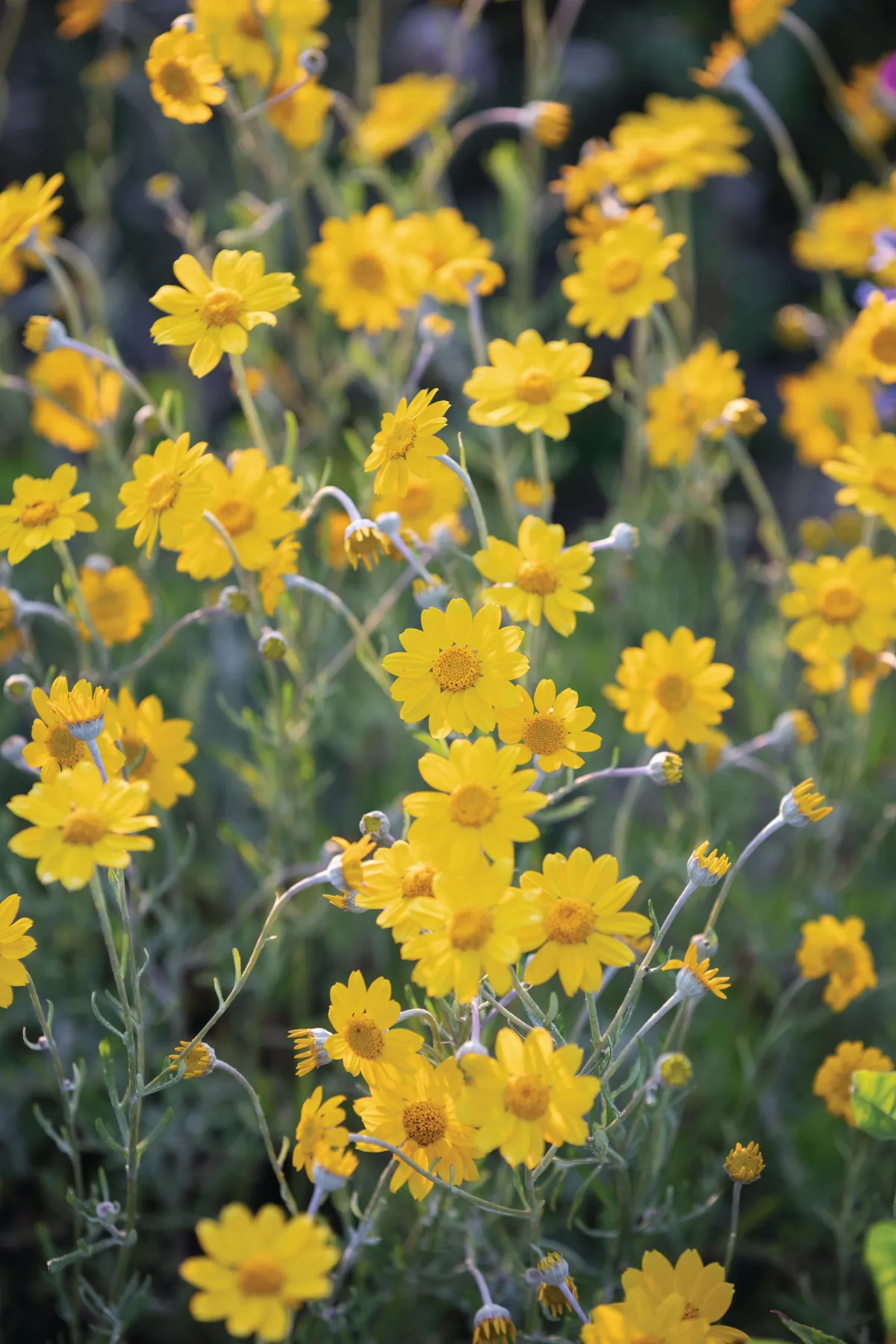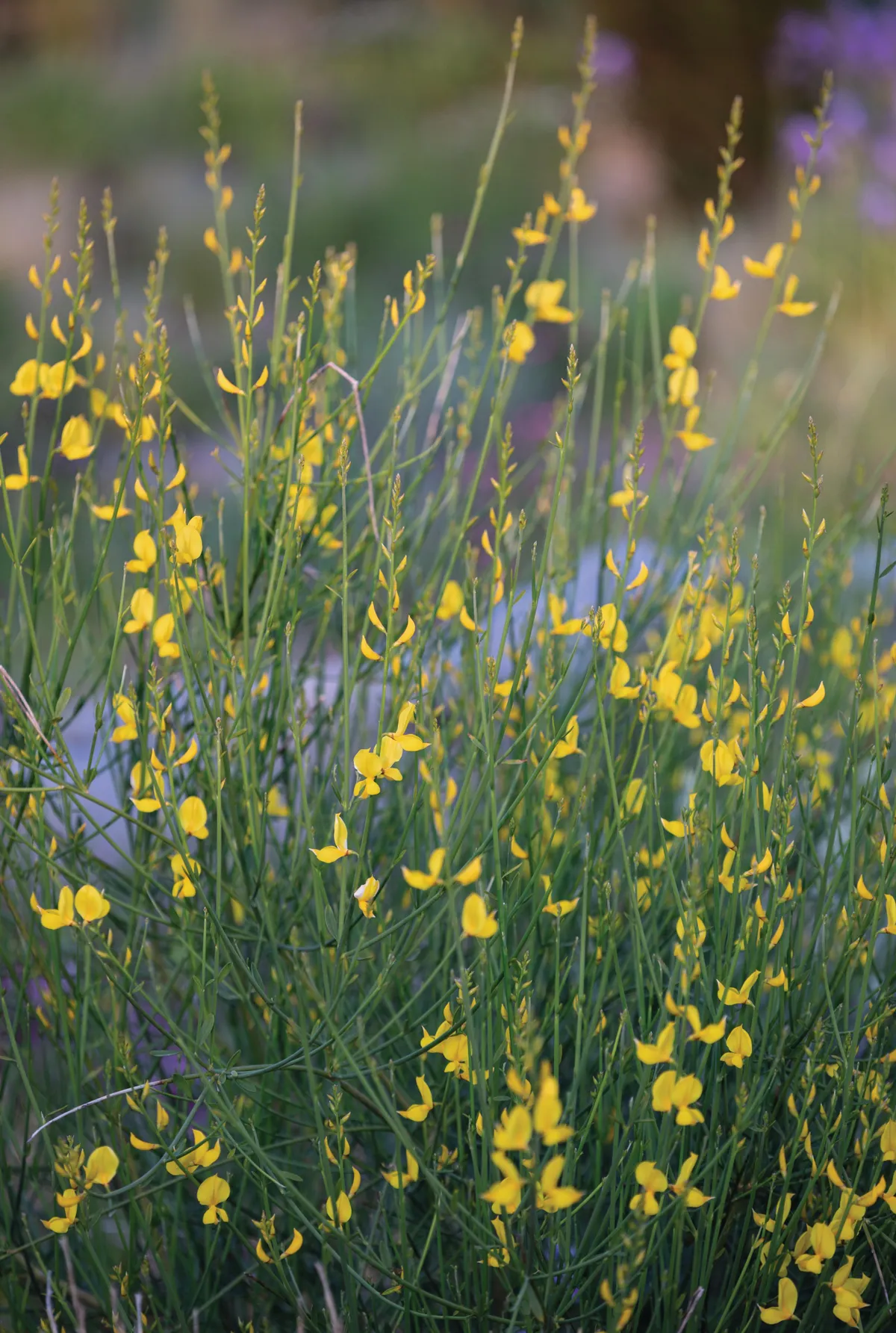There is a whiff of existential angst blowing through the gardening world, highlighted by the heated debates that rage every time some iteration of a wild garden wins Gold at Chelsea. What plants should we be growing in our rapidly changing climate? And how can we balance the gardener’s urge to create a stimulating and beautiful space with our responsibilities to the planet, and all the creatures that share it with us?
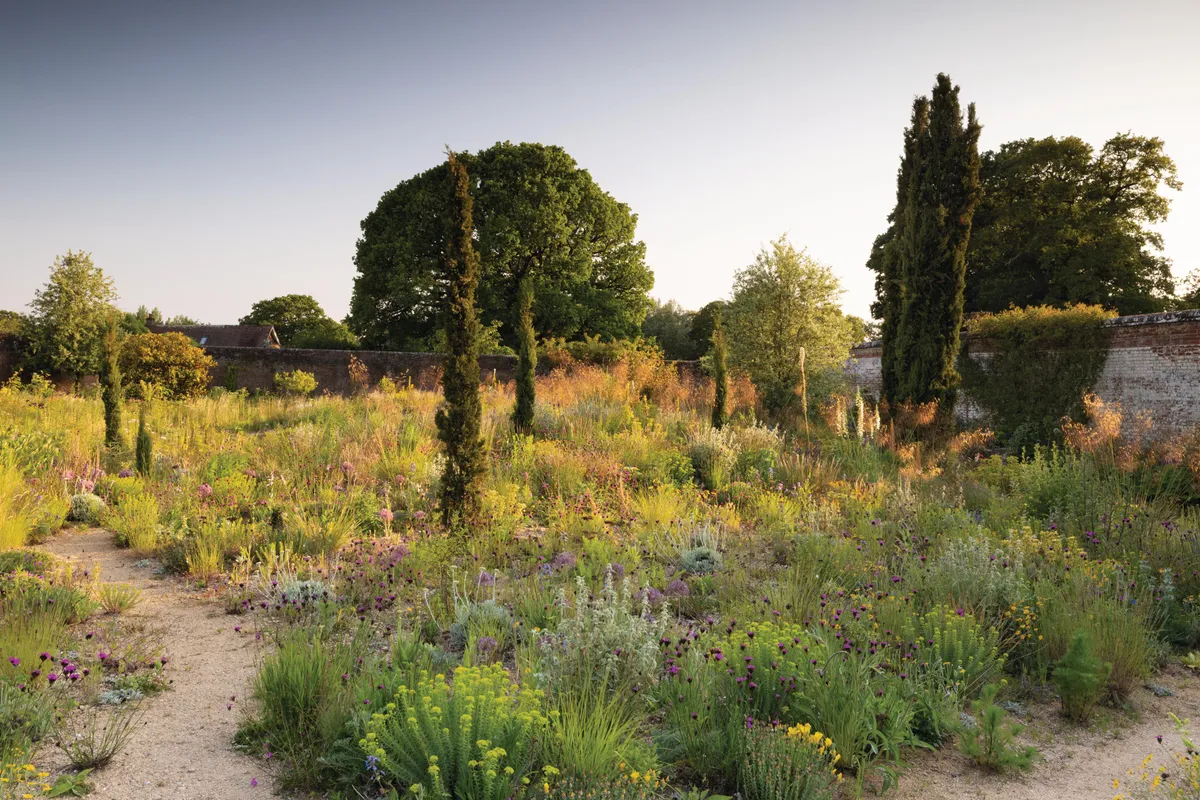
Read Wilding? Here's more on the film of the book
Four years ago, proto-rewilders Isabella Tree and Charlie Burrell set out to find their own solution at Knepp, the 3,500-acre Sussex farm they famously withdrew from conventional land management more than 20 years ago. As the wider estate exploded with a sky-rocketing diversity of plants and wildlife, the couple gradually became aware that their private walled garden, which continued to be managed with traditional formality, was looking increasingly incongruous. So they approached Tom Stuart-Smith with a conundrum – how do you rewild a garden?

Set within 19th-century walls, the Knepp Castle garden had already been through a number of changes over the years, but when Tom and his team were called in they found a plot of just over an acre, divided by a wall, to create an ornamental kitchen garden with raised beds and grass paths, and a simple swimming pool garden with a large croquet lawn. In comparison with the exuberance of the rewilded land, it was decidedly lacking in diversity.

Out in the wider estate, native plant communities had been allowed to regenerate the former farmland naturally over a period of years, with the help of keystone animal species including Tamworth pigs and Exmoor ponies, which roughed up the ground and munched back emerging scrub. Within the garden walls, a different approach was going to be required, since this ‘rewilded’ space had to be attractive to humans as well as producing congenial habitats for wildlife. Ironically, this called for careful planning, and the keystone species that Tom brought in to help effect the change were big beasts of the horticultural and ecological world – plant ecologists James Hitchmough and Mick Crawley, and organic herb expert Jekka McVicar.
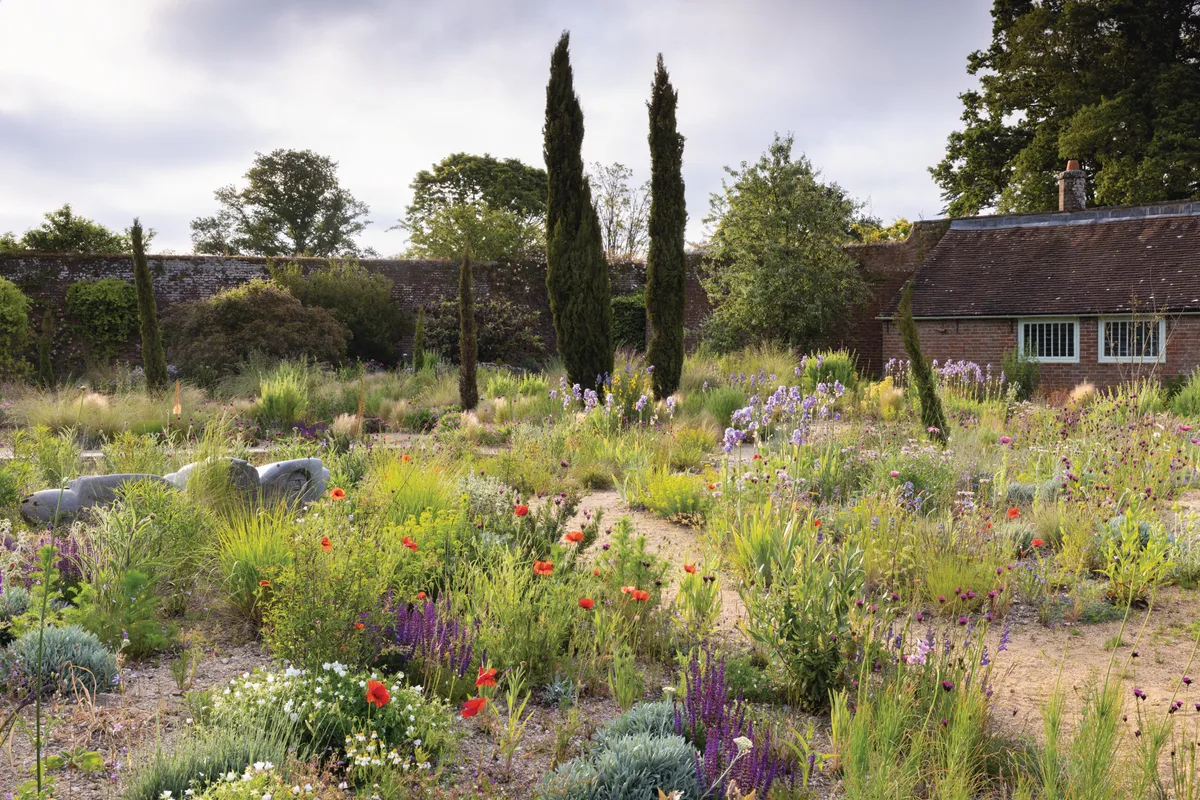
Their collective goal was to increase biodiversity in all its forms – both flora and fauna – but to do this, they first needed to create a much wider range of habitats. In what is now the Rewilded Garden, the existing neat lawn and topsoil were scraped aside and mixed with varying quantities of sand and the crushed concrete and brick remains of an old farm building to produce a range of growing media with significantly varied pH, fertility and drainage levels. These were reintroduced to form an undulating series of mounds and troughs over which the surface height varies by up to 3m in places. Where once there was a croquet lawn, the ground is now fit only for the craziest of crazy golf.

There are areas of flat, exposed topsoil, dry peaks, damp troughs and sunny, south-facing slopes, each of which suits different plant communities. For the free-draining, low-nutrient ridges, James designed an intricate plant matrix, made more complex with an over-seeded perennial mix, all anchored by a number of carefully positioned dominant species, including pencil cypresses, the grass Stipa gigantea and Spanish broom.
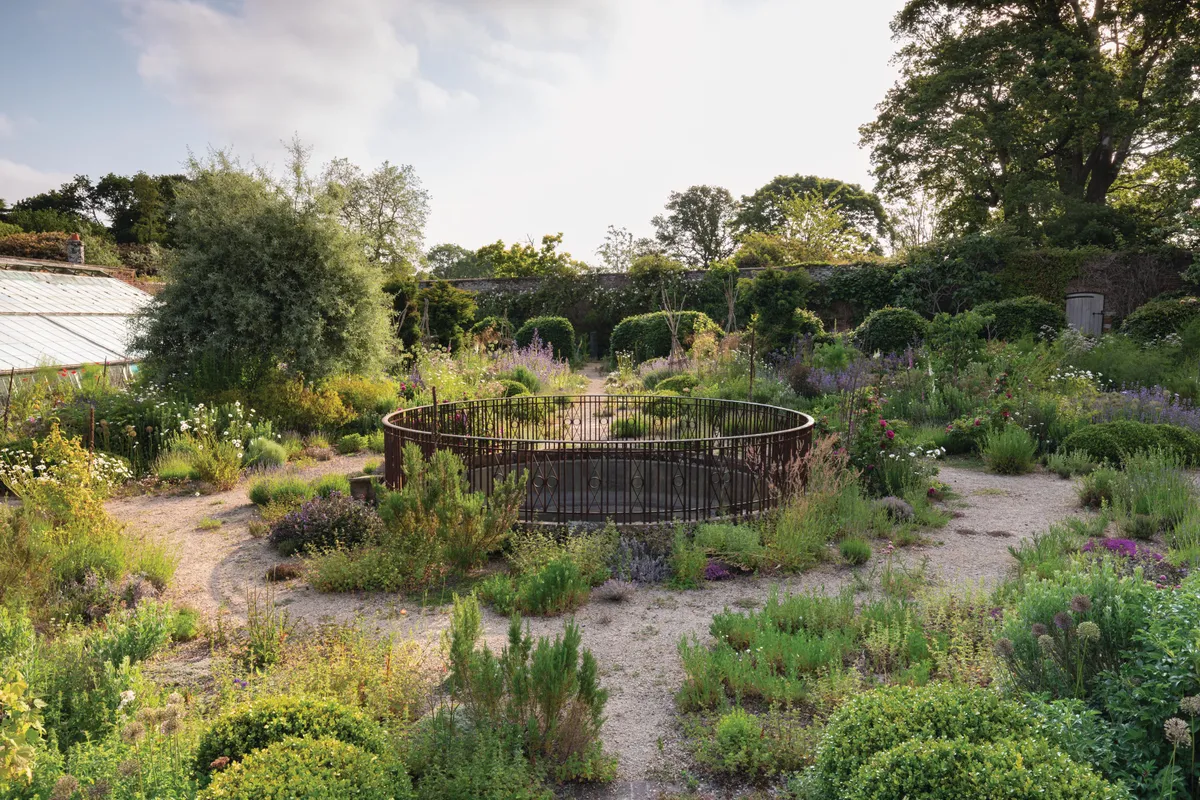
In place of a conventional planting plan, head gardener Charlie Harpur and a team, including his job-sharing deputies Suzi Turner and Moy Fierheller, were presented with a spreadsheet of plants by quantity, and an instruction from James to simply distribute them evenly across the site. The resultant tapestry – including sea lavender, lady’s bedstraw and toadflax, as well as Melica ciliata, Berkheya purpurea and Salvia x sylvestris ‘Blaukönigin’ – is startlingly good, with an impact that is far greater than the sum of its parts.

As part of the Knepp missionary zeal to spread the rewilding word, Charlie is creating a 188-square metre model garden that will showcase the most applicable and accessible plant combinations for a domestic garden, and conducts regular ‘safaris’ within the Rewilded Garden to explain what they are doing and why they’re doing it. “We are gardening hearts and minds as well,” he says. “This is all an experiment, so we are absolutely not telling anyone what to do, but we do want to encourage everyone to reconsider the limits of what might be possible within their own gardens.”
Read more about the garden below.
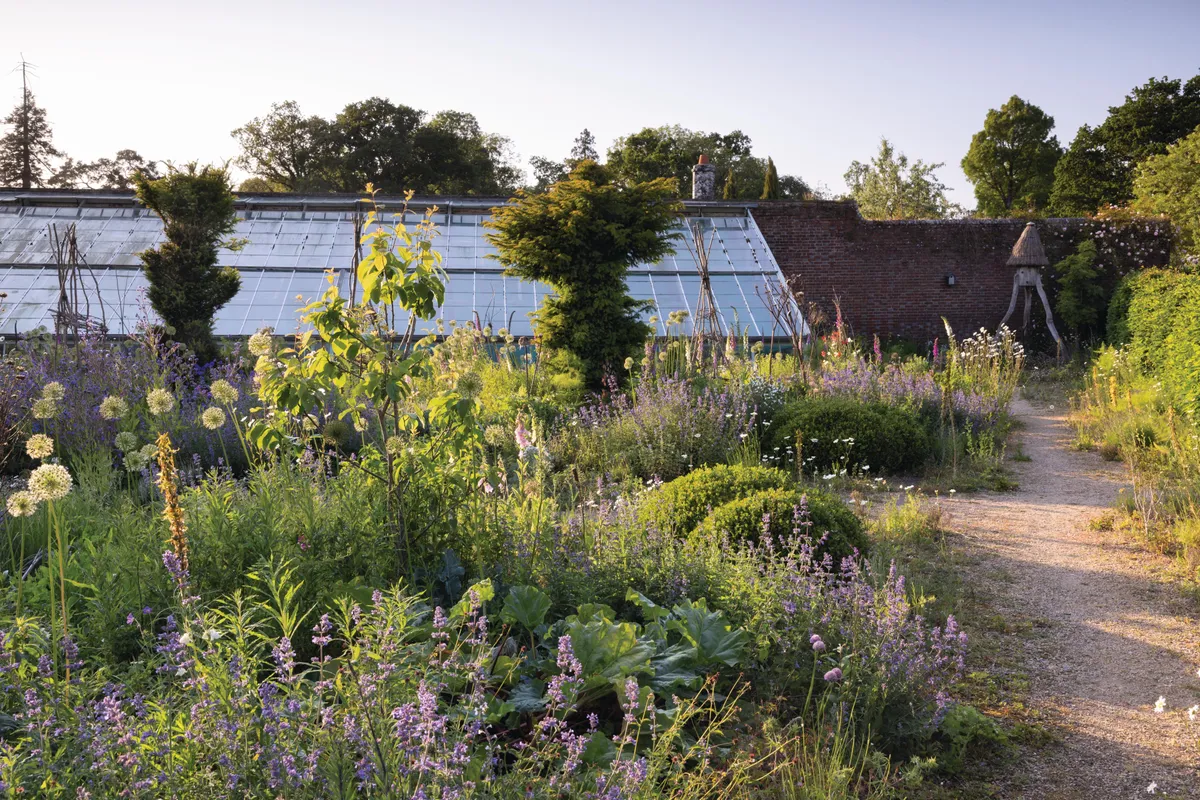
The once-neat pieces of yew topiary by the glasshouse in the Kitchen Garden were ‘goat-pruned’ into eccentrically random forms by Tom, and the gravel paths have been allowed to go ‘dirty’ with encroaching self-seeded plants, blurring the boundaries of the beds. A tripod Bee Kind wild bee hive stands in the corner.
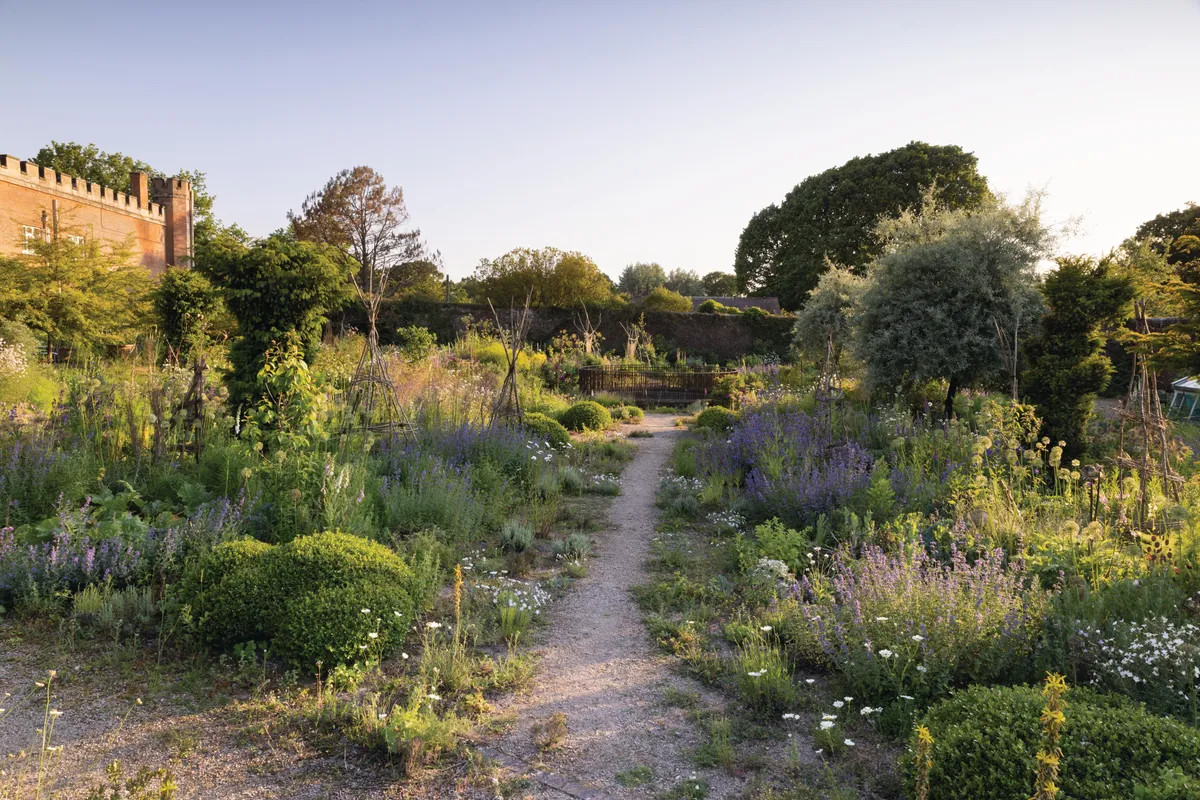
The Kitchen Garden presents a more accessible route to garden rewilding, as the soil is being slowly manipulated rather than radically reorganised, and many ornamental elements, such as Allium ‘Mont Blanc’ and Nepeta x faasenii, have been retained within the gently shifting plant community.

Charlie Harpur was a young landscape architect in Tom Stuart-Smith’s studio when the plans for Knepp were first being discussed, and he was so inspired by the concept that after completing the Kew diploma, he moved sideways to become head gardener and turn the design into a reality.
Key plants from Knepp
USEFUL INFORMATION Address: Knepp Castle Estate, West Grinstead, Horsham, West Sussex RH13 8LJ. Tel 01403 741235. knepp.co.uk
